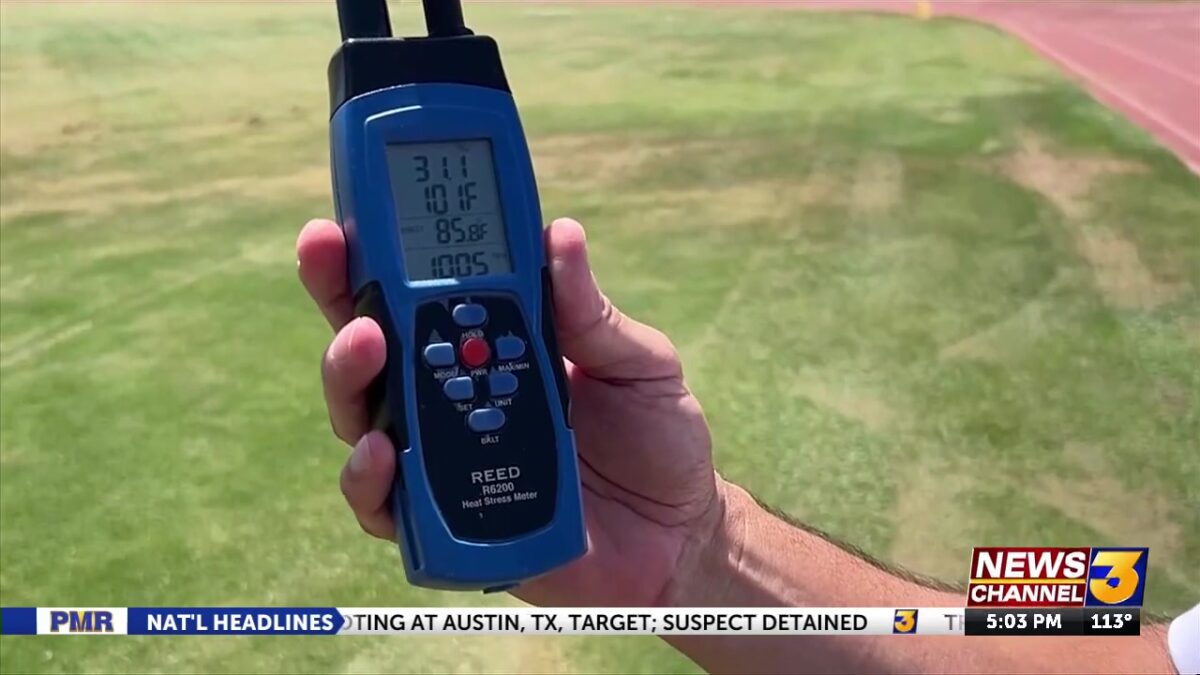The measurement that aims to keep student-athletes safe from dangerous heat

Gavin Nguyen
PALM DESERT, Calif. (KESQ) – Extreme heat continues to create sweltering conditions for thousands in the Coachella Valley.
For student-athletes who are returning to school and gearing up for practices, it means less time under the sun.
The California Interscholastic Federation, or CIF, has a set of guidelines to keep students safe from excessively hot and humid conditions. It involves the wet-bulb globe temperature (WBGT), which the National Weather Service describes as a measure of the heat stress in direct sunlight, which takes into account: temperature, humidity, wind speed, sun angle, and cloud cover (solar radiation).
This differs from heat index, which takes temperature and humidity into account, and is measured in the shade.
Estevan Valencia, the Athletic Director at Palm Desert High School, showed News Channel 3 the device he and his coaching staff use to determine the WBGT.
“What it’s done is kept schools accountable for making sure that we’re not out there practicing under extreme heat conditions,” Valencia remarked.
Valencia said they make a reading each time a team wants to practice outside. According to him, coaches have shifted practices to the early morning or evening to avoid peak heat.
Aside from the air temperature, though, Valencia explained that humidity is one of the key factors that the wet bulb globe temperature is able to take into account.
“The humidity, obviously, is all about sweat and the more the kids are sweating. And that’s the key… that’s the scary part,” he added. “There’s a huge difference between the actual temperature and actual wet bulb” because of the other factors, like humidity and wind speed.
When wet bulb temperatures exceed 90 degrees, which they often hover around during the summer months, certain restrictions are placed on practices. Maximum practice time falls to just one hour, and 20 minutes of rest breaks must be provided during that hour of practice. Football players are also not allowed to practice with their protective gear to prevent overheating.
Anything over 92.1 degrees: practice must be delayed until the wet bulb temperature falls.
Valencia said he, the coaching staff, and athletic trainers are all ready to adapt to changing conditions during the summer.
“We’re athletes, and athletes are notorious for making adjustments. And that’s what we’ve done throughout the whole valley.”
“They’ve been playing sports in the Coachella Valley for over 100 years. And so, you know, this is another way to keep kids safe,” he added.